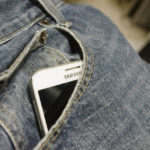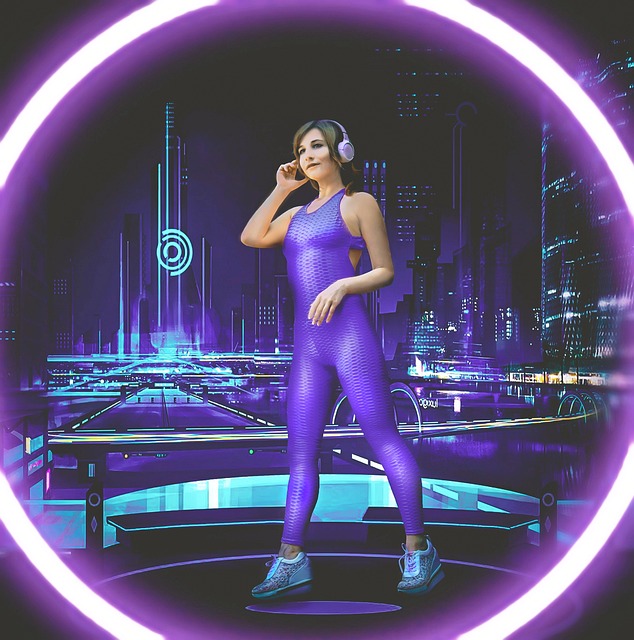Every year at CES, you’ll see a lot of fascinating health tech concepts and prototypes — at-home urinary scanners, smartwatches that can noninvasively monitor blood sugar, and a wearable patch to prevent sexual dysfunction. And then, nothing ever seems to make it to market. Or if it does, it only happens years later, and often, the final product isn’t nearly as capable as the initial pitch.
There are three letters why: FDA.
The Food and Drug Administration is meant to protect public health. One of the many ways it does that is by regulating medical devices. This is a good thing. When human health is on the line, you want medical technology to be accurate, safe, and reliable. You want these devices to have gone through the appropriate channels and testing. As a result, obtaining FDA clearance is a rigorous process that’s tricky to navigate. It involves clinical trials and documentation. It’s not a process measured in weeks but in months, if you’re lucky, and years if you aren’t. The tech world wants things fast, but the FDA doesn’t work around a company’s product timelines.
“It is no small task to be a medical device company, build this infrastructure, build all the standard operating procedures that the FDA wants to see,” says Movano Health CEO John Mastrototaro, whose company is working on making an FDA-cleared smart ring for consumers.
If you’re a company developing emerging health tech, you’ve essentially got two options: roll up your sleeves and dive right into the complicated, time-consuming clearance process; or nerf your gadget so the FDA doesn’t need to weigh in. You can guess which is the more popular option.
FDA clearance is a long, hard process
Movano Health is one of the companies at CES 2023 that heavily invested in the FDA clearance process. Last year, the company showed up at CES with a bold plan for a women-first smart ring that would be capable of monitoring chronic illnesses. At the time, Mastrototaro told The Verge that a beta version of the ring wouldn’t be available until late 2022. It’s 2023, and there’s still no ring. The launch date is now planned for sometime later this year.
If cleared, the Evie Ring would retail for under $300 and come with no extra subscription.
Image: Movano
When I caught up with Mastrototaro at this year’s CES, he wasn’t fazed much. Instead, he pointed to the fact that the ring — now called Evie, short for “evidence”— successfully passed a hypoxia trial in October 2022, showing clinical-level accuracy for heart rate and oxygen saturation measurements. The FDA, Mastrototaro says, requires accuracy across a broad range of oxygen levels with a margin of error of 4 percent. That has to be tested for women, men, and people of all skin tones. The Evie Ring delivered an error margin of 2 percent. But the testing isn’t done. Next up is a trial for pulse oximetry, or blood oxygen saturation, metrics.
“As a medical company, we have to conduct clinical trials,” Mastrototaro says. To get FDA clearance, Movano has to maintain documentation throughout the development and testing processes, and production has to be done at a medical device manufacturing facility. Another thing medical device companies must do is ensure that their data practices are HIPAA compliant. Things like communication protocols, cloud infrastructure, and cybersecurity need to be included as part of the FDA filing — and those protocols have to be tested by a third party. Mastrototaro says that clinical accuracy is “less than 1 percent” of everything that gets filed to the FDA.
But if successful, the Evie Ring would be one of the first consumer wearables fully cleared as a medical device.
Clinical accuracy is “less than 1 percent” of everything that gets filed to the FDA
FDA clearance may also be the only way a company can get novel health tech into the hands of consumers. For the past few years, Valencell — a wearable tech provider to companies like LG, Jabra, and Bose — has been at CES showcasing its noninvasive blood pressure monitoring tech using photoplethysmography (PPG) sensors. The surprise at this year’s CES was that Valencell’s decided it’s getting into the consumer hardware game itself with a $99 cuffless, calibrationless fingertip blood pressure sensor.
The device looks like a fingertip pulse oximeter. It’s worn on the middle finger, where a PPG sensor shines light into the skin. The device then measures the light that’s reflected back and runs it through Valencell’s algorithm, which is based on a dataset of 7,000 people. That’s all it will purportedly take to get accurate diastolic and systolic measurements.
Making it easier and more convenient to measure blood pressure could greatly improve hypertension treatment. After all, treatment heavily depends on taking consistent measurements. While the CDC says a third of American adults have high blood pressure, the Mayo Clinic estimates that 62 percent of Americans only measure their blood pressure a few times a month — far less than the recommended twice per day. And yet, Valencell’s tech has been around for years without takers, despite its experience in the field.
Valencell had to develop its fingertip blood pressure device for its tech to see the light of day. It’s currently going through the FDA clearance process.
Image: Valencell
“We tried to push [Valencell’s blood pressure tech] into the marketplace in other folk’s products, and we ran up against resistance,” Valencell president and co-founder Steven LaBoeuf explained to The Verge. Any company that would want to create this sort of product or a feature using Valencell’s blood pressure tech would have to go through the FDA — and none wanted to take that challenge. LaBoeuf said the FDA essentially told the company that, to get clearance, it needed to have a commercial product with the technology in it.
“We realized the only way for us to do that was to make our own product,” says LaBoeuf.
The other issue is that no one had submitted an over-the-counter cuffless, calibrationless blood pressure device to the FDA before. That meant the FDA had to come up with a testing plan for Valencell’s device — a major reason why Valencell opted to go with a fingertip monitor design that both the FDA and medical community would be more familiar with. A wrist-worn gadget would require additional — more complicated — testing, as it’s a continuously worn device. (As in, you’d have to validate a smartwatch’s blood pressure accuracy while lying down, sitting up, during sleep, and a whole other range of scenarios.) The effort wouldn’t have necessarily made sense given that doctors are still grappling with how to make the best use of wearable data.
“We realized the only way for us to do that was to make our own product.”
Right now, Valencell says it aims to get FDA clearance by the end of this year. But that’s an “if all goes well” timeline. You only need to look as far as Withings’ history of CES announcements to see you can’t ever predict when you’ll get FDA clearance. Multiple Withings products have either never made it to US markets or took over a year to arrive due to the regulatory process. For instance, the Withings ScanWatch was introduced at CES 2020. It didn’t get the go-ahead to sell in the US until nearly two years later.
It’s easier to hide behind the wellness label
Most consumer health gadgets focus on wellness features like step counts, activity tracking, and sleep monitoring because they don’t require FDA review. For features that straddle the line between wellness and medicine, companies will often err on the side of wellness for the same reason. Take SpO2 monitoring, for example, where the vast majority of SpO2 features in smartwatches right now are limited to spot checks or are part of passive sleep monitoring. This form of SpO2 monitoring is effectively for your “entertainment.” If the metrics are wrong, there’s ostensibly no substantive harm because there’s no claimed medical or diagnostic application.
But if you want to use SpO2 to detect a potential condition or simply want to ensure clinical-level accuracy for future features, you’d have to commit to FDA clearance — like Withings did with the ScanWatch and as Movano is currently doing with Evie. Meanwhile, Fitbit has been seeking FDA clearance for sleep apnea detection using SpO2 for over five years but has released less ambitious SpO2 wellness features while it waits. When you see everything that goes into getting FDA-cleared — and how long it takes — it makes sense why most consumer tech companies want to avoid regulation altogether.
The Withings ScanWatch is a rare smartwatch that has gotten FDA clearance for an SpO2-related feature.
Photo by Amelia Holowaty Krales / The Verge
The main reason why Movano’s Evie Ring and Valencell’s fingertip blood pressure device might stand a chance is that the products were envisioned as medical devices from the get-go. It’s the opposite of consumer-first companies suddenly deciding they want to be medical device makers. It’s plain easier for a company to learn the consumer part of the equation than the medical side.
The line between medical devices and consumer health tech grows blurrier with each passing year as sensors, algorithms, and wearables become more advanced. But if companies really want to convince us that we need their devices to live healthy lives, they also can’t keep hiding behind the “wellness” label. Going forward, it’s hard to imagine that FDA clearance won’t play a larger role in consumer health tech. It’s either that or we’ll have to make peace with the coolest health tech never making the leap from concept to reality.









